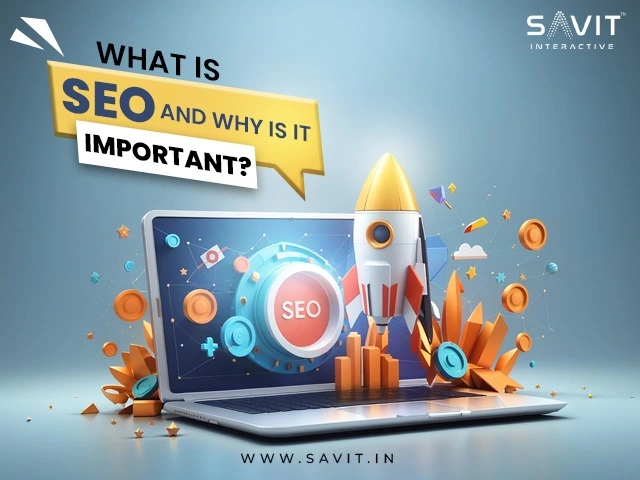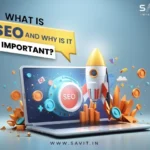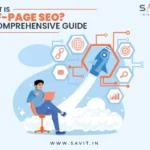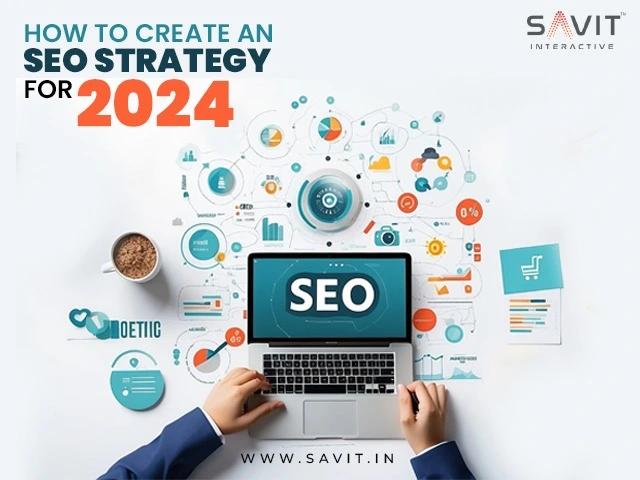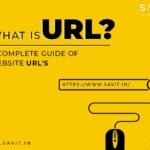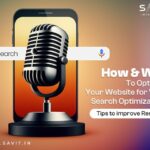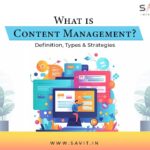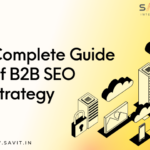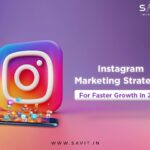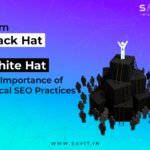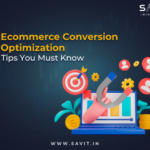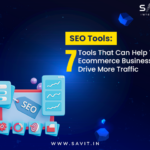People can find what they are seeking online with the aid of search engines. Whenever you need information, search engines are usually the first place you turn, whether you are booking a meal, doing product research, or planning a trip. They offer entrepreneurs a fantastic opportunity to increase targeted website traffic.
The process of positioning your website to appear higher on a search engine results page (SERP) in order to increase traffic is known as search engine optimization or SEO. Generally speaking, the goal is to appear on Google’s first page of search results for keywords that matter most to your target market. Therefore, SEO is as much about comprehending the requirements and desires of your target audience as it is about the technical aspects of setting up your website.
What Is SEO?
A website can increase its exposure in search engines like Google by implementing SEO (search engine optimization) techniques. So exactly what is SEO? It’s a technique which ultimately lead to an increase in organic traffic. The goal of SEO is to satisfy consumers’ search requirements by producing excellent, relevant content and providing the greatest user experience.
The definition of SEO includes what, why, and how of on-site and off-site SEO efforts. Due to this, SEO is frequently separated into “on-page” and “off-page” categories.
In actuality, SEO usually involve:
- Keyword research
- Creation and optimization of content
- Technical Optimization
- Link building
Why Is SEO Important?
SEO is one of the essential marketing channels. First and foremost, 53% of all website traffic comes from organic search. That’s a major factor in the prediction that the global SEO market will grow to an astounding $122.11 billion by 2028. SEO yields measurable business results for brands, corporations, and businesses of all sizes.
People usually start their journey with a search if they want to go someplace, do something, obtain information, perform research, or purchase a product or service. However, search is broken up into various segments these days. Consumers can use search engines online, such as Google and Microsoft Bing. In addition, social media platforms like Instagram and YouTube and e-commerce websites like Amazon are also used.
As a matter of fact, 61% of internet customers begin searching for products on Amazon, whereas 50% begin on search engines like Google. Furthermore, Notable findings from the same study state:
- About 32% begin at Flipkart.
- 20% percent begin on YouTube.
- 19% get started on Facebook.
- 26% begin their search on Instagram.
Every year, trillions of searches are made. Being “search engine friendly” is essential on any website or platform where potential customers may search for your business. This is due to the fact that search is often the primary driver of website traffic. All of this suggests that your revenue may benefit from improving visibility and beating your rivals in search results. SEO is extremely crucial as search engine results pages, or SERPs, are so competitive and packed with search tools (as well as PPC ads).
Features of SERPs include:
- Featured snippets.
- Knowledge panels.
- People Also Ask.
- Maps.
- Top stories (news).
- Images.
- Videos.
- Carousels.
SEO is essential for brands and companies because, in contrast to other marketing approaches, quality SEO work has a long shelf life. When a sponsored campaign ends, the traffic stops. Social media traffic is unpredictable and far less than it formerly was.
The cornerstone of holistic marketing is SEO, meaning everything your business does counts. Once you know what your consumers want, you can use that knowledge to improve your
- Ads (both sponsored and organic).
- Content of websites.
- Properties on social media.
One way to get the traffic (e.g., conversions, visits, sales) you need to meet important business objectives is through SEO. Additionally, it fosters trust because highly ranked websites are typically seen as reliable and authoritative—two qualities that Google actively seeks to reward with better rankings.
What distinguishes SEO from PPC and SEM?
SEM and PPC are two more terms you will probably hear about in the more prominent search marketing community. Keep reading to learn more about these two concepts and how SEO relates to them.
SEO vs SEM
SEM stands for search engine marketing and is more commonly known as search marketing. Search marketing is one kind of digital marketing concept. It is a catch-all word for a mix of PPC and SEO efforts designed to increase visitors through sponsored and organic searches.
Search engine optimisation, in its most basic form, is the process of increasing exposure and traffic via paid and unpaid search engine optimisation tactics.
Thus, what distinguishes SEO vs SEM? In a technical sense, they are identical; SEO is merely half of SEM:
- SEO is the process of directing natural search engine traffic.
- Traffic from search engines, both paid and organic, is driven by SEM.
It starts to get a little unclear at this point. SEM and PPC are frequently used interchangeably these days. This concept appears to outperform SEO. Nonetheless, PPC marketing is similar to SEO marketing. The ideal way to approach SEO and SEM is to consider SEM a coin. One side of the coin is SEO, and the other is PPC.
PPC versus SEO
Pay-per-click, or PPC, is a type of internet marketing where advertisers receive a charge each time a link in their advertisement is clicked. Basically, advertisers bid for specific keywords or phrases to have their ad appear in search engine results. The advertiser’s ad will appear as one of the top results when a user searches for one of those terms or phrases.
Thus, if search engine marketing is like a coin, then PPC and SEO are its two sides; PPC is the paid side, and SEO is the unpaid side. It’s also important to keep in mind that they are complementary channels, so comparing or determining which is better is never appropriate. Selecting both is always a good idea, provided your budget permits it.
As stated, the phrases SEM and PPC are synonymous in the industry. The terms SEO (organic search) and PPC (paid search) will always be used interchangeably when we refer to “SEM.”
Types of SEO
Three categories of SEO exist:
- Technical SEO is the optimization of a website’s technical elements.
- On-site SEO is the process of improving a website’s content for users and search engines alike.
- Off-site SEO is the process of developing brand assets (people, marks, values, vision, slogans, catchphrases, colours, etc.) and taking actions that will eventually improve brand recognition and awareness (i.e., showcasing and expanding the brand’s authority, competence, and dependability) as well as demand generation.
Regarding technical optimizations and content, you are still in complete control. Although these types of SEO also known as the SEO trinity of success doesn’t necessarily include off-site actions (you can’t control referrals from other sites or if platforms you depend on end up closing their doors or going through major adjustments).
Think about SEO like a sports team. To win, you need an indestructible offence and defence, as well as supporters, also known as an audience. Think of content optimization as your offence, technology optimization as your defence, and off-site optimization as a tactic to attract, engage, and retain a loyal following.
- Technical Optimization
The technical aspects of a website must be optimised for SEO to be effective. The first stage in the procedure is to create a website that search engines can index and crawl. “MAKE THAT DAMN SITE CRAWLABLE,” Google trends analyst Gary Illyes once said in a Reddit AMA.
You want to make it as simple as possible for search engines to find and access all content (text, photos, and videos) on your pages. Technical information such as internal linking, navigation, URL structure, and more are pertinent in this situation.
Another essential component of technological optimization is experience. Search engines place a significant priority on faster page loading and improved user experiences. Components like HTTPS, mobile friendliness and usability, Core Web Vitals, and avoiding obtrusive interstitials are all important in technical SEO.
Structured data, often known as schema, is another field of technical optimization. By including this code on your website, you can improve your visibility in search results and assist search engines in comprehending the content on your page.
SEO is also influenced by site security, content management systems (CMS), and online hosting providers.
- Content Optimization
In SEO, you should optimize your content for two primary viewers: search engines and human readers. This means you have to optimize the content visible to the search engines (the code) and your audience (the actual content on the page).
The constant goal is to publish outstanding and valuable information. Data and direction given by Google and an awareness of the needs and desires of your audience can help you achieve this.
When making content more user-friendly for humans, you should ensure that:
- It covers relevant topics about which you know something or have firsthand expertise.
- It contains search terms that users might use to locate the content.
- It is distinct or innovative.
- It is well-written and without spelling and grammatical mistakes.
- It contains reliable and up-to-date information.
- It incorporates multimedia, such as pictures and movies.
- It is superior to competitors’ SERPs.
- It is readable and organized so that readers can easily comprehend the content you are sharing (consider using subheadings, paragraph length, bolding and italics, sorted and unordered lists, varying the reading level, etc.).
Some essential content components to optimize for in search engines are:
- Meta Descriptions
- Title Tags
- Header tags (H1–H6)
- Open Graph
- Image alt text
- Twitter Cards metadata
- Off-site Optimisation
Even if some off-site activities are not considered “SEO” in the strictest sense, several actions can support and indirectly contribute to SEO success. Link building, or the act of acquiring links to a website, is the activity that is most directly related to off-site SEO. Among other things, your website’s traffic and rankings may benefit from receiving a range of links pointing at it from trustworthy, authoritative, and relevant websites. The goal is to have a large number of high-quality links because quality always wins over quantity when it comes to links. And how are those links obtained? There are numerous ways to promote websites.
Techniques that support SEO initiatives are:
- Brand marketing and Brand building: Strategies aimed at increasing recognition and reputation are known as brand building and brand marketing.
- PR: Public relations tactics meant to entice editors to provide links.
- Content marketing: Among the popular forms of content marketing include research studies, videos, ebooks, podcasts (or guest postings on other podcasts), and guest blogging.
- Social media optimisation and marketing: Make sure to properly optimise your brand’s handle throughout all key channels, distribute pertinent content, and claim it.
- Listing management: It is the process of claiming, validating, and improving the content on any website or directory where your business may be listed and discovered by search engines (e.g., directories, review sites, wikis).
- Reviews and ratings: Getting, observing, and responding to them.
In general, when you discuss off-site, you are talking about actions that won’t directly affect your ranking from a technological perspective. However, everything your brand does gets counted. You want your brand to be found anywhere they are being searched for by the people. Some have tried to rename search engine optimisation as “search experience optimisation” or “search everywhere optimisation” in an attempt to redefine the term.
How does SEO work?
Google uses “algorithms,” which are relatively complex processes, to rank pages. These algorithms take into account a huge number of ranking parameters to determine a website’s rating. Understanding how search algorithms work is not required (in actuality, no one knows for sure).
Nonetheless, having a basic understanding of SEO will assist you better grasp how it operates and how to optimise your pages for Google rankings.
Keeping It Relevant
Make sure your first priority when it comes to SEO is to provide relevant content.
Why? Since displaying relevant results to people is Google’s top priority. Relevance goes well beyond only returning results for searches about “dogs” rather than “cats” when you search for dogs. Additionally, it focuses on fulfilling the user’s search intent—the rationale behind their use of a specific search query.
Four primary categories of search intent are:
- Informational (such as “What is Spotify”)
- Navigational (such as “Spotify login”)
- Commercial (like “Spotify review”)
- Transactional (like “Spotify Premium”)
As an example, consider this:
You don’t want to find articles on various dog diets or homemade recipes when searching for “best dog food.” Although neither satisfies your search criteria, they would be topically relevant.
Google is aware that if you search for the “best dog food,” you most likely want to buy dog food based on the actions of millions of other users. For this reason, when a user searches for the finest dog food products, Google either ranks product sites or reviews (i.e., the search purpose is either transactional or commercial).
Thus, how can you ensure that your page satisfies the purpose of a search query? Google, fortunately, handles all the hard work. All you have to do is examine the search results and consider what you find.
Things to think about when creating relevant content are:
- Topical relevancy: One method by which Google ascertains the subject matter of a page is by examining the keywords that are present on the page. Make sure to optimise your pages for keywords, but don’t go overboard.
- Content type: Examine what kinds of results rank for the term to make sure your page has the appropriate content for the query (e.g., landing pages, product pages, informational posts, reviews, etc.)
- Freshness of content: Certain topics, like product reviews or news updates, call for regular updating of new content. If the search query has a time constraint, you must ensure your content is up-to-date.
- Location: Google may display different results depending on where a searcher is searching. If so, you should modify your approach appropriately (for example, by adhering to local SEO best practices if you own a local business).
Where Should I Begin?
Use a tool such as Keyword Overview to rapidly determine the intent of a keyword. After entering your keyword, select “Search.” The “Intent” widget is where you may view the intent. Additionally, the Keyword Magic Tool shows the purpose if you are looking up keywords.
Producing High-Quality Content
Selecting the appropriate keywords is only the beginning. Content that will rank for those keywords must also be produced. SEO requires both content production and optimisation, which cannot be replaced.
Google’s John Mueller responded to a question regarding the most crucial element to rank in the top search results with just one word:
You have to produce content that is literally in the top 10 on a specific topic if you want to rank well in Google. You want to be on the first page of each SERP with ten organic results.
The following are some essential characteristics that set superior content apart from inferior content:
- Comprehensiveness: Go over the subject in great detail and address any visitor’s queries. Word count is not important. Make sure every page is a comprehensive resource for searchers.
- Originality: Don’t just compile the best findings into your content. It should constantly offer something extra, be it a fresh perspective, insightful information, practical examples, or creative graphics.
- E-E-A-T signals: Google pays close attention to factors such as Experience, Expertise, Authoritativeness, and Trustworthiness (E-E-A-T). It would help if you were an authority on the subject matter of your writing, offer accurate and trustworthy information, and provide both on- and off-site demonstrations.
- Readability: The text you write should be simple to read. This entails using a constant tone of voice, writing brief phrases, avoiding passive language, and rationally organising your information.
Where Should I Begin?
After researching potential keywords, it’s time to start writing content. Although it can be challenging to measure article quality precisely, an aid like SEO Writing Assistant can be useful. Open the tool and begin writing to get started. Alternatively, copy and paste the content if you already have it. The programme will assess your writing in four areas: tone of voice, originality, readability, and SEO. It will also offer suggestions for modifications.
As such:
Having Excellent Usability
Google favours websites that are easy to use. Once more, technical SEO is crucial in this situation. SEO guarantees that your website satisfies usability criteria in addition to making sure it is crawlable and indexable. This comprises factors such as:
Site security: You should have an SSL certificate and use HTTPS (rather than HTTP) for your website, among other basic security requirements.
Page speed: As speedier pages offer a better user experience, Google gives them a higher ranking in the search results.
Mobile friendliness: A “mobile-first indexing” process occurs when Google assesses your content based on how well it functions on a mobile device. Mobile SEO ensures that your content is easily readable by mobile consumers.
Usability: Your website should have an intuitive layout that makes it simple for users to locate anything they need quickly. And move through your website without encountering any issues or barriers.
Where Should I Begin?
An extensive site audit is the most effective method to obtain a broad picture of your website’s usability. You can find other reports in Site Audit that concentrate on various aspects of the functionality of your website.
To begin, type in your domain name and select “Start Audit.”
Choose “Website” as the crawl source and the number of pages per audit in the basic settings. Click “Start Site Audit” after that. Once the program has finished indexing your website, you will get a dashboard displaying your site’s general health and many thematic reports.
In addition to scanning for more than 140 problems, the tool offers suggestions for resolving them.
Something like this: You can view all of the errors, warnings, and notices associated with your site by selecting the “Issues” tab. Click “Why and how to fix it” to bring up a popup window with further information about the problem and how to solve it.
Building Authority
Search engines use several off-page signals to assess the trustworthiness of your website.
Backlinks, or links pointing to your website from other websites, are among the strongest signals and, generally speaking, one of the most substantial ranking criteria.
What is a backlink? Backlinks are essentially search engines’ way of saying “yes.” Google gives a page more authority the more high-quality links it receives, which may result in improved rankings.
Link building, or the process of obtaining backlinks to your website, is, therefore, a crucial component of SEO.
There are numerous link-building tactics, such as:
- Guest Blogging: Writing articles for other websites with a backlink to your own website.
- Linkable asset creation: Making valuable content that organically generates links. Links (e.g., free tools, interactive pages, original studies)
- Broken link building: The process of identifying links on other websites that are broken and offering links to your pages to take their place.
While constructing links, prioritise quality over quantity. More authority is passed by a single backlink from a highly authoritative page than by 100 backlinks from unrelated, low-quality pages. You do want to have as many links as you can. However, such connections must come from high-quality, pertinent pages that address the theme of your website.
Finally, keep in mind while Google does rank pages, it does not rank websites; therefore, the majority of authority signals are at the page level); the total quantity of backlinks pointing to your website can nevertheless affect the ranking of a certain page.
How? You can transfer authority between your pages in the same manner as external pages transfer authority to your site by using internal linking or connecting from one page on your website to another. Remember this when making internal links. Additionally, make sure there are enough internal links going to your most crucial sites.
Internal linking is “one of the biggest things you can do on a website to kind of guide Google and visitors to the pages that you think are important,” as Google’s John Mueller put it.
Where Should I Begin?
Doing a backlink gap analysis is the simplest method of locating backlink chances.
Why? It will assist you in identifying the websites that link to your competitors rather than to you. Ultimately, a website will most likely be glad to connect with you if it is delighted to link to a competitor, especially if you provide content of a higher quality.
Go to the Backlink Gap tool to get started. Next, enter up to four competitor domains along with your own. Next, select “Find prospects.” A table containing all the websites that link back to your competitors will be sent to you. There are additional criteria available to you, such as “Best,” “Weak,” “Strong,” “Shared,” “Unique,” or “All” opportunities.
The following describes each filter:
- Best: Websites that connect to all of your competitors but not to you.
- Strong: Pages that point exclusively to you
- Weak: Websites with fewer links pointing to you than to competitors
- Unique: Websites that only link to one competitor domain.
- Shared: Pages with links to all of your competitors
- All: Every potential website
Use the “Best” filter first. Select “Export” from the upper right menu. You now have a lengthy list of websites you can contact to obtain backlinks.
Conclusion
Now that you are aware of what is SEO? It’s time to act. If you follow the advice in this blog, you should see an increase in your rating and get ahead of your competitors by one step.
Connect with the SEO experts at Savit Interactive to get excellent SEO services for your business.
FAQS
What is SEO, and how does it work?
Optimising a website’s technical setup, content relevancy, and link popularity are all important to make its pages more user-friendly, popular, and relevant for search queries and to help the website rank higher in search engine results. This procedure is referred to as search engine optimisation or SEO.
What is an example of SEO?
The most popular application of SEO is the on-page SEO concept, wherein content optimisation for a particular keyword is carried out. For instance, your keyword might be “homemade ice cream” if you write a blog post about creating your own ice cream. Your post’s headers, body, meta description, slug, and title would all contain that keyword.
What is the main purpose of SEO?
Getting better search engine ranks is the main goal of SEO, as this expands the target audience. Type a search query into Google to instantly get a sense of the issue in SEO. Enter it without quotation marks since this is how most users search.
Do websites need SEO?
According to studies, most users like to click on websites rated highly; therefore, mastering SEO can significantly increase the likelihood that you will draw in organic traffic and new clients. However, it goes beyond simple rankings. Additionally, good SEO improves the way people interact with your website.
What is a backlink in SEO?
An SEO backlink is a link pointing to your website from another website. High-quality backlinks can improve your website’s exposure and search engine rating, driving more people to it.
